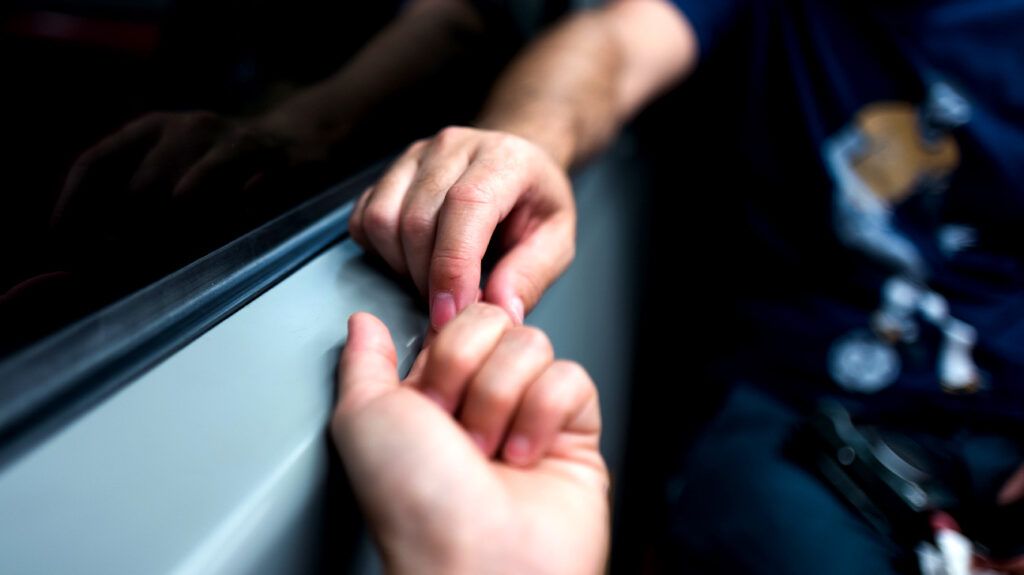A person can get an MRSA infection by having contact with someone or something with the bacteria and then touching their own skin or nose. Other factors can also increase the risk, such as frequently taking antibiotics.
Staphylococcus aureus (staph) is a bacteria that usually lives harmlessly on the skin but can lead to serious infection when it enters the body. MRSA stands for “methicillin-resistant Staphylococcus aureus,” which is a type of staph that certain antibiotics cannot easily kill.
Anyone can carry MRSA or acquire an MRSA infection. For infection to occur, MRSA has to get inside the body and spread. A person is more at risk if they have a cut or break in the skin, a weakened immune system, or have been in the hospital for a long time.
Learn more about how a person gets MRSA, including information on risk factors and prevention. This article also answers some frequently asked questions on the topic.

There are two ways a person can have MRSA: having an active infection or being a carrier.
Someone with an active MRSA infection has symptoms such as fever and skin changes. On the other hand, carriers have MRSA on their skin and nose but no symptoms. However, carriers can still transmit MRSA.
MRSA can be community-associated or healthcare-associated, mainly depending on where the person has exposure to the bacteria.
Some of the ways a person can get MRSA include:
- Touching the wounds or infected skin of someone who has MRSA, then touching their own skin or nose.
- Using or sharing personal items with someone who has MRSA, such as washcloths, athletic gear, or towels.
- Touching items, such as phones or door knobs, that have MRSA on the surface. MRSA can survive on surfaces for a
few weeksTrusted Source .
People have an increased risk of MRSA by misusing antibiotics or often having cuts or scrapes on their skin.
Learn more about MRSA and its causes.
While anyone can get MRSA, some groups have a higher risk of acquiring it. According to the
- students at day care or school
- military personnel staying in barracks
- people who receive inpatient care, for example, in hospitals
- people who inject drugs
- people who have medical devices fitted or surgery
- athletes
Some ways a person can help prevent MRSA
- Maintaining good hand and body hygiene: This includes washing hands and body regularly, especially after exercise or using the toilet.
- Maintaining good wound care: Cuts and scrapes should be cleaned and covered with bandages until they heal. Always look for signs of infection and follow a healthcare professional’s advice on wound care.
- Not sharing personal items: Avoid sharing towels, razors, and washcloths with others.
- Keeping surfaces clean: Regularly clean surfaces that might have contact with a person’s bare skin. Always follow the instructions on the disinfectant product.
- Keeping laundry clean: Wash hands after touching dirty sheets or towels and before touching clean laundry. Also, be careful when handling dirty laundry that contains bodily fluids.
- Minimizing skin injuries: Take measures to
help preventTrusted Source skin injury, especially when engaging in contact sports. - Taking antibiotics as the doctor instructs: Always follow a doctor’s order when taking antibiotics, and be sure to complete the full course.
Find out the signs and symptoms of MRSA.
In healthcare settings
When receiving medical care, a person can help prevent acquiring an MRSA infection by:
- cleaning their hands often, especially when changing bandages or dressings
- knowing how to take care of their wound or a newly fitted medical device
- contacting a healthcare professional if they suspect their wound or the area around a recently fitted device looks infected
- following the doctor’s instructions when taking antibiotics
- following any and all instructions a healthcare professional provides
When visiting someone with an MRSA infection, a person can help avoid transmission by:
- cleaning their hands before entering and leaving the room where the individual with MRSA is staying
- following instructions that a healthcare professional outlines — for example, this might involve wearing protective gowns and gloves
Here are some common questions about MRSA.
What is the most common way to get MRSA?
The most common way to contract MRSA is to touch someone or something that has the bacteria and then touch their own skin or nose.
Where do most people carry MRSA?
Most people carry MRSA on their skin or nose. The bacteria does not tend to cause issues unless it enters the body.
Can MRSA be cured completely?
While MRSA is resistant to many antibiotics, some other antibiotics are available that can clear the infection.
A person can get MRSA by touching someone or something with the bacteria and then touching their own skin or nose. Factors like being in the hospital, misusing antibiotics, and having cuts or scrapes can increase a person’s risk of developing an MRSA infection.
There are many ways to help prevent getting MRSA, including practicing good hygiene, cleaning surfaces, using antibiotics as a doctor instructs, and avoiding sharing personal items.


